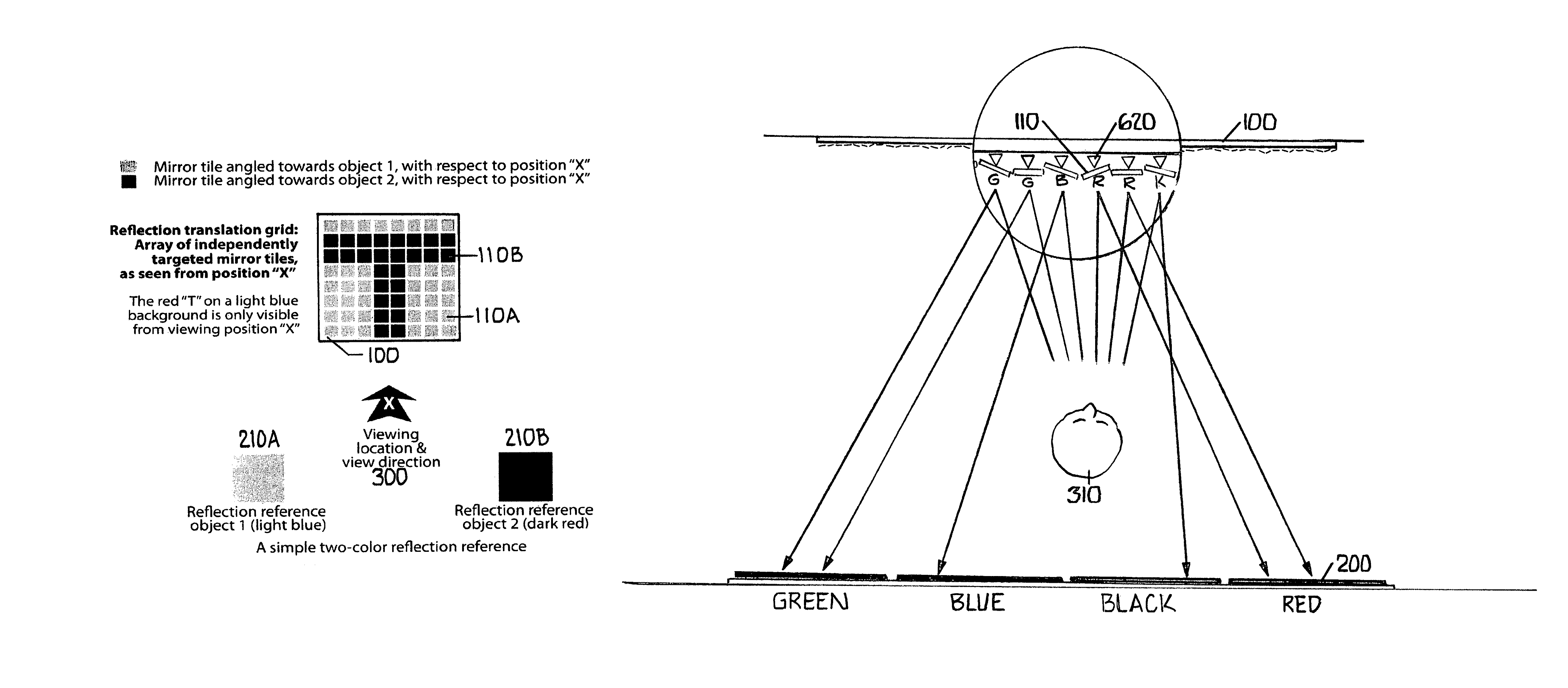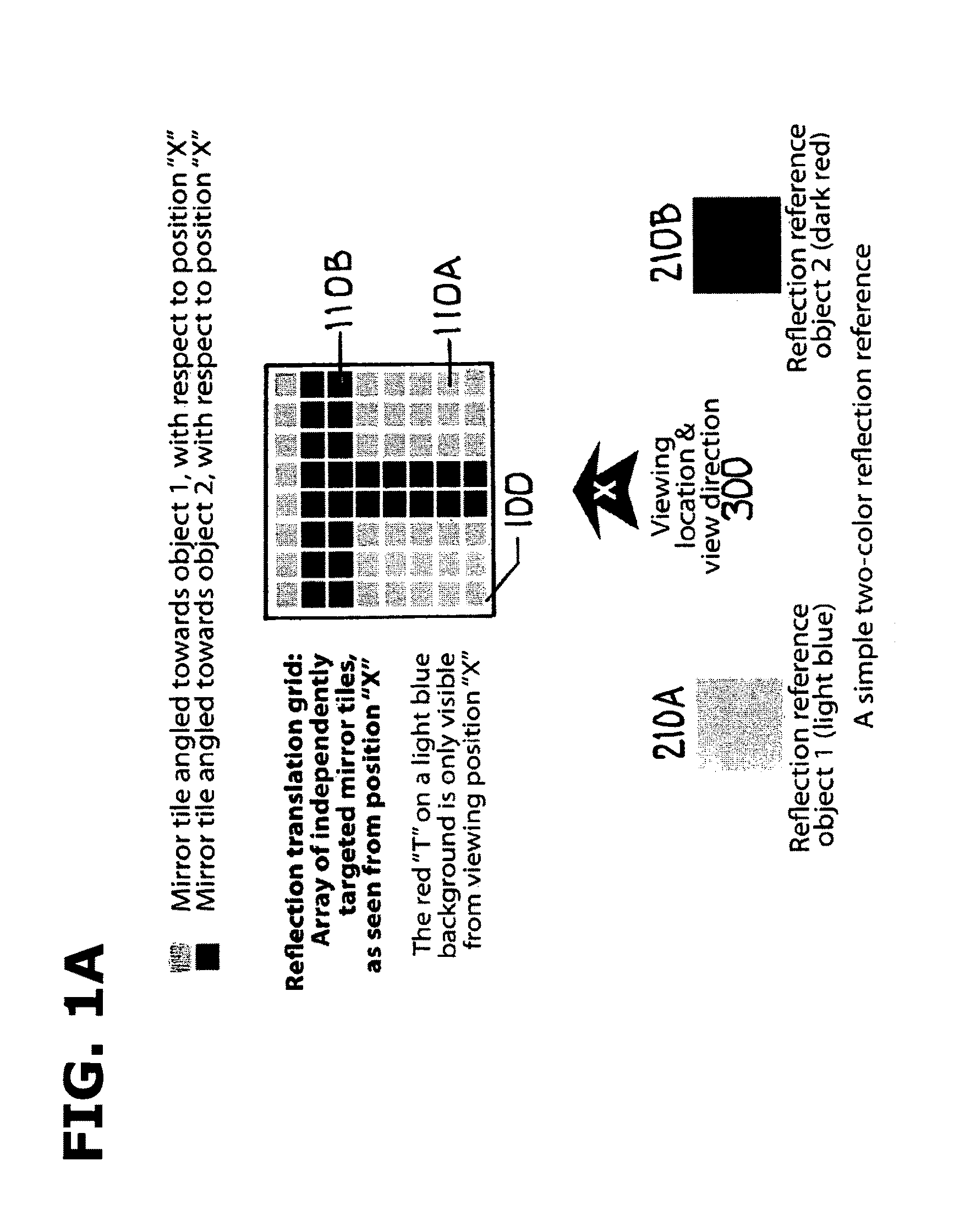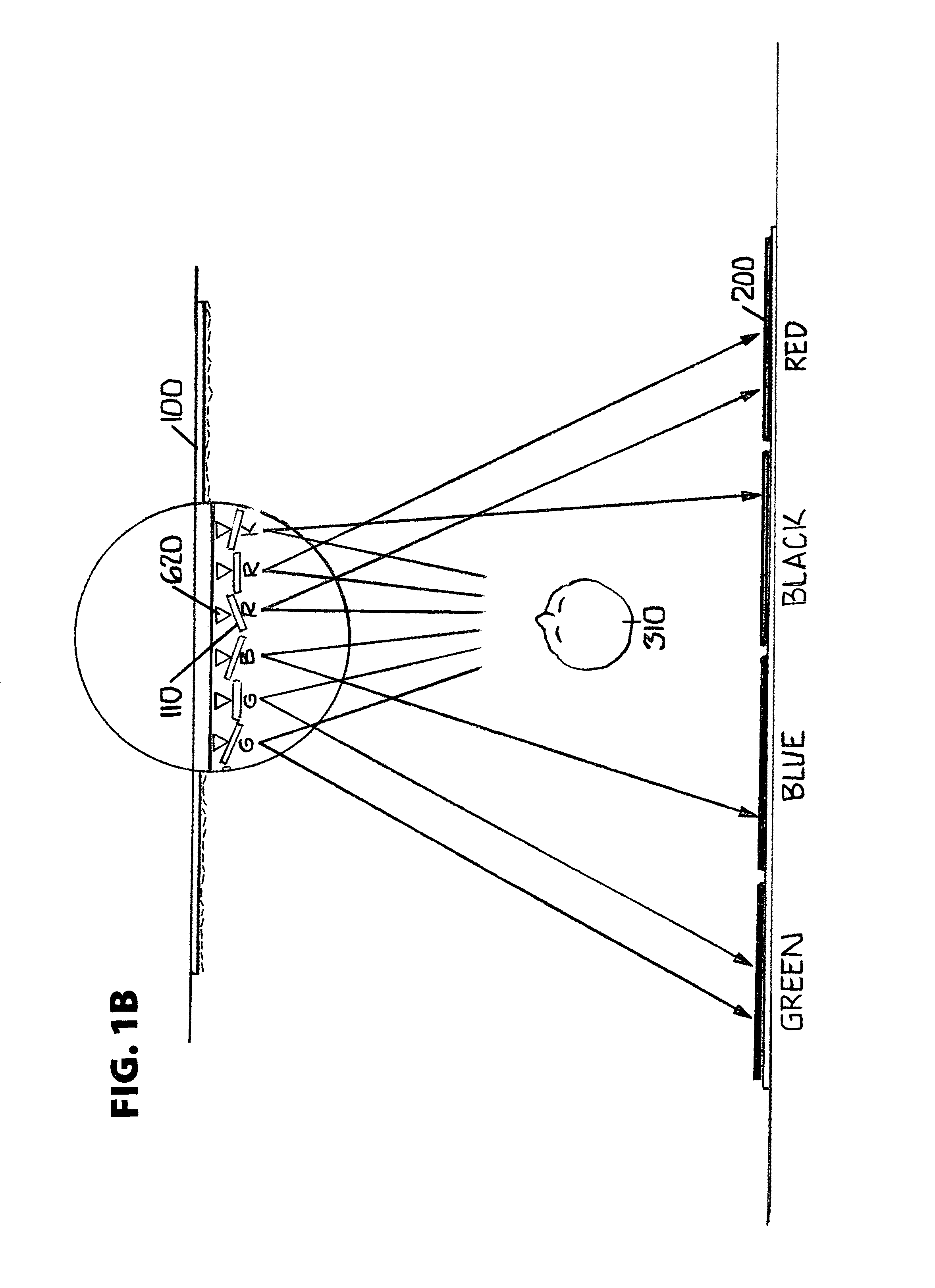Array of individually angled mirrors reflecting disparate color sources toward one or more viewing positions to construct images and visual effects
a technology of individual angled mirrors and color sources, applied in the direction of projectors, instruments, viewers, etc., can solve the problems of increasing technical difficulty, affecting the quality of images, so as to achieve the effect of different viewing area sizes
- Summary
- Abstract
- Description
- Claims
- Application Information
AI Technical Summary
Benefits of technology
Problems solved by technology
Method used
Image
Examples
Embodiment Construction
and OPERATION
FIG. 1A: A Small Two-Color Reflectively Constructed Image
[0100]Referring now to the drawings, in FIG. 1A is shown a reflective array 100 in which each reflective element 110A and 110B reflects toward a viewing position 300 a reflection source color 210A or 210B. Each reflective element 110A or 110B can, by the art of the setting of its reflection angle, present to the viewer 300 either one of the two available reflectable colors 210A and 210B and thus the shown reflective array 100 can present images constructed of two colors, in this case the letter “T”. Additional reflectable colors can optionally be incorporated into more complex displays, allowing for images of greater color fidelity. Likewise, larger reflection arrays with more reflection elements can present more detailed, higher-resolution images.
FIG. 1B: A Four-Color Reflectively Constructed Image
[0101]In FIG. 1B is shown a more detailed reflective array 100, with a much larger plurality of reflective elements 1...
PUM
 Login to View More
Login to View More Abstract
Description
Claims
Application Information
 Login to View More
Login to View More - R&D
- Intellectual Property
- Life Sciences
- Materials
- Tech Scout
- Unparalleled Data Quality
- Higher Quality Content
- 60% Fewer Hallucinations
Browse by: Latest US Patents, China's latest patents, Technical Efficacy Thesaurus, Application Domain, Technology Topic, Popular Technical Reports.
© 2025 PatSnap. All rights reserved.Legal|Privacy policy|Modern Slavery Act Transparency Statement|Sitemap|About US| Contact US: help@patsnap.com



